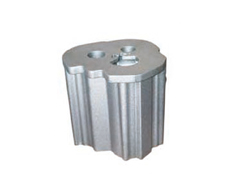+86 311 85258258
+86 311 85258258
Dec. 24, 2020
Choose the right production method to give full play to the good performance of the flange
As a device for connecting pipelines, flanges play an important role in pipeline connection. Inappropriate flange selection or incorrect installation will directly affect the sealing performance of the flange connection, causing the pipeline to withstand greater media and operating conditions, as well as pipeline leakage. Therefore, in order to better exert the sealing performance of flanges, the selection and installation of flanges must be correct for normal pipeline production.

We all know that if you want to install a flange, you should have a flange first. At present, the flange production processes on the market mainly include the following four types: cast flanges, forged flanges, cut flanges, and rolled flanges. Forged flanges are divided into free forging and die forging. Different flange production methods have different production equipment, production procedures, and applications, such as:
1. Forged flange
(1) The basic steps of free forging butt welding flanges include upsetting, drawing, punching, bending, and cutting. The former is to forge the original blank in the axial direction to reduce the height and enlarge the cross-section. There are two types of large-scale operations: total upsetting and partial upsetting. It is suitable for forging gear blanks and other disc-shaped forgings; secondly, drawing is a forging process that will increase the length of the blank and reduce the cross-section. It is suitable for the production of blanks such as spindles and connecting rods of lathes.
Punching is also a forging process. The punch punches through holes or non-through holes in the blank. It is used in flange production to open the outer diameter of the blank; bending will make the flange blank into a certain angle or shape forging Process; Cutting is a forging process that divides the blank or cuts off the material head.
(2) The full name of die forging is model forging. The heated billet is placed in a forging die on a fixed die forging equipment to form a shape. The processing process of die forging flange is blanking, heating, pre-forging, final forging, and punching, stripping, trimming, tempering, and shot peening. Commonly used die forging equipment includes die forging hammers, hot die forging presses, flat forging machines and friction presses.
2. The so-called "cut flange" refers to a disk that is directly cut out of the inner and outer diameter and thickness of the flange on the intermediate plate, and then the bolt holes and water lines are processed into a disk. It is called a cut flange. The cut flange has the characteristic that its larger diameter is limited to the width of the middle plate.
3. As for "rolling flange", it is a process of cutting strips from the middle plate and then rolling them into a circle. This is also called rolling. After the blank is successfully rolled, it is welded and then flattened. Treatment of water lines and bolt holes is suitable for the production of large flanges.
We are flanges suppliers. Please feel free to contact us.